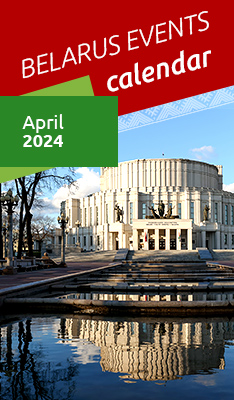Events
Development Bank of Belarus to finance all government programs starting from 2014
MINSK, 14 October (BelTA) – Starting from 2014 all government programs will be financed via the Development Bank of the Republic of Belarus, First Deputy Head of the Central Office of the Council of Ministers of Belarus, Head of the Secretariat of the Prime Minister Alexander Zaborovsky told reporters on 14 October commenting on the joint action plan to conduct structural reforms and raise the competitiveness of the Belarusian economy that was passed on 10 October, BelTA has learnt.
“Starting from 2014 all the government programs will be financed via the Development Bank of the Republic of Belarus. There will be no quasi-budgetary transactions via other banks. This will ensure transparency and clarity for all the participants of the loan market, including executors of government programs,” Alexander Zaborovsky said.
A financial plan will be passed by 2014. It will spell out how government programs and projects should be resourced and how borrowed, own and budgetary resources should be spent while implementing these programs. “This will allow minimizing the squeezing effect while financing government programs. The squeezing effect implies that some of the loan supply that is claimed by the rest of the economy is often squeezed out,” Alexander Zaborovsky said.
A new term “government lending program” will be introduced to improve administration and performance evaluation of loan portfolio of the state.
The joint action plan also provides for a number of other measures. The deviation from estimate indicators in the budget policy will be eliminated using non-emission means. “External factors had a negative impact on both the revenue side and the expenditure side of the budget. Therefore, after the optimization of the state budget, all social and protected spending will be financed in full. This type of spending includes salaries of public sector employees, obligations on external and domestic public debts, etc,” he explained.
The monetary policy will be moderately tough. “There will be no extra rubles that could put pressure on the currency market. By the end of the year, credit expansion in the economy will be under Br9 trillion,” Alexander Zaborovsky said.
The sources of financing in the construction industry and agribusiness will be balanced out (first of all in the fourth quarter). Alexander Zaborovsky noted that the completion of construction projects and other projects as part of government programs has always been an important source of ruble liquidity. It usually resulted in the increased demand for import and foreign currency on the currency and stock exchange in the fourth quarter. “Thanks to the optimization of these government programs, everything will be balanced out and there will be no extra pressure on the markets,” he noted.
“The foreign debt will be honored and all foreign currency obligations of the government and the National Bank will be balanced out without reducing the gold and foreign currency reserves. The sources of the payments will be diversified: these will be not only external sources, but also efficient budget loans on the domestic market,” the Belarus government representative said.
Alexander Zaborovsky explained that the abovementioned plans are a set of short-term measures that are part of the macroeconomic policy of the government and the National Bank. Apart from that, the plan contains medium-term measures aimed to generate additional sources of economic growth in the public and private sectors.
The section on structural measures includes efforts to improve the system of economic management and socio-economic planning. “It will be included in the 2014 targets where the major priorities will be efficiency, profit, and foreign economic activity. It means that following the instructions of the head of state, we will focus on efficiency indicators, not gross figures,” Alexander Zaborovsky said.
The joint action plan of the Government and the National Bank is the major strategic document that will be used to make managerial decisions and elaborate estimate documents for 2014. The document was submitted to the International Monetary Fund during the participation of the high-level delegation at the annual meeting of the Board of Governors of the International Monetary Fund and the Board of Governors of the World Bank Group on 11-13 September.
According to Alexander Zaborovsky, the resolution provides for clear-cut requirements on its execution. “The plan will be closely monitored by the Central Office of the Government,” he added.
| Su | Mo | Tu | We | Th | Fr | Sa |
|---|---|---|---|---|---|---|







 print version
print version make home page
make home page add to bookmarks
add to bookmarks

